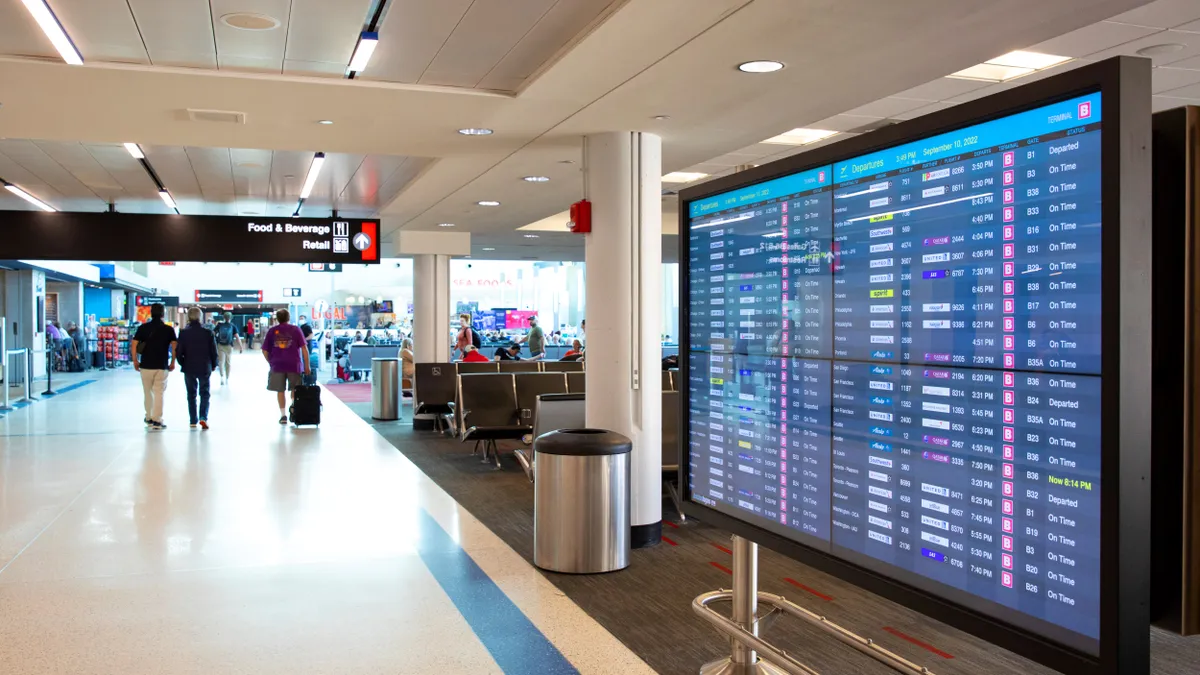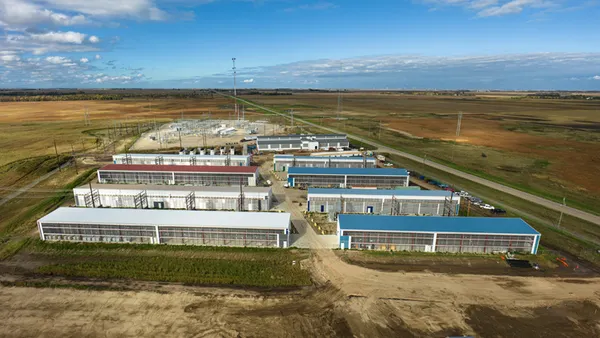Dive Brief:
- The Federal Aviation Administration is awarding $970 million for renovations and upgrades at 125 U.S. airports across 46 states as well as Guam and Palau.
- The funding targets projects that aim to modernize aging infrastructure, with many grants containing elements that will build new or expanded terminal facilities, ground transportation and sustainability elements, the U.S. Department of Transportation announced Thursday. These projects include adding passenger boarding bridges, renovating and adding existing passenger waiting areas and gates, reconstructing a baggage handling system and upgrades to HVAC and plumbing systems.
- This round of funding is the fourth of five planned $1 billion annual investments under the bipartisan infrastructure law’s Airport Terminal Program, according to a news release. The bipartisan infrastructure law has provided $25 billion in total to modernize U.S. airport infrastructure, DOT said.
Dive Insight:
The average age of airport terminals in the U.S. is over 40 years old, with a $100 billion backlog of delayed projects, owing to regulatory and financial barriers, according to Airports Council International—North America.
In its U.S. Airport Infrastructure Needs Report released in March 2023, ACI-NA estimated a need of $151.1 billion from 2023 through 2027 to cover critical infrastructure projects — up more than 30% since 2021 due in part to delayed investments during the COVID-19 pandemic. These projects range from replacing aging HVAC and plumbing systems to expanding terminals to accommodate modern aircraft and passenger volumes.
For large, medium and small airports, the greatest share of investments needed is directed toward terminal buildings, with associated costs accounting for 30% to nearly 50% of total needs for each type of airport, according to the American Society of Civil Engineers’ 2021 Report Card for America’s Infrastructure.
“Billions of dollars of safety-related improvements are needed to bring airports up to FAA-mandated design standards,” and for rehabilitating aging airfield pavements and addressing environmental concerns, according to the American Planning Commission.
Against that backdrop, significant modernization projects have sprouted across multiple U.S. airports spurred by a nearly $1 billion infusion from the bipartisan infrastructure law last year. Over 100 projects from previous Airport Terminal Program grant awards have been completed or are nearly complete, DOT said.
As part of the $970 million that the FAA is awarding, $40 million will be allocated to Tampa International Airport to add nine passenger boarding bridges and use an automated people mover that can connect Terminal D to the main terminal, DOT said. Austin-Bergstrom International Airport in Texas will channel $33.2 million to add at least 20 gates in Terminal B and connect the new terminal to the existing terminal through a 518-foot underground tunnel, while Denver International Airport will receive $15 million to boost efficiency and capacity through a baggage handling system reconstruction that will include oversized baggage lift replacements.
Purdue University Airport in Lafayette, Indiana will be allocated $1.5 million to replace an 80-year-old terminal and meet Americans with Disabilities Act requirements.
Grants that target sustainability initiatives in airport terminals include $10 million to General Edward Lawrence Logan International Airport in Boston for a new energy-efficient air conditioning system in Terminal B; $9 million to Antonia B. Won Pat International Airport in Guam to install and integrate a renewable energy system, including solar photovoltaic panels, on the terminal roof; and $3 million to Columbia Metropolitan Airport in South Carolina for a solar PV array installation and battery electrical storage system that can provide a resilient power source for the airport terminal, DOT said.
The Griffiss International Airport in Rome, New York, will get $1.75 million to update a 40-year-old airport air traffic control tower, including upgrades to its HVAC units, plumbing system, roof, guardrails and windows, as well as communication, fire protection, electrical and security systems, DOT said.
Correction: A previous version of this article erred in naming the U.S. law that governs accessibility. It is the Americans with Disabilities Act.














